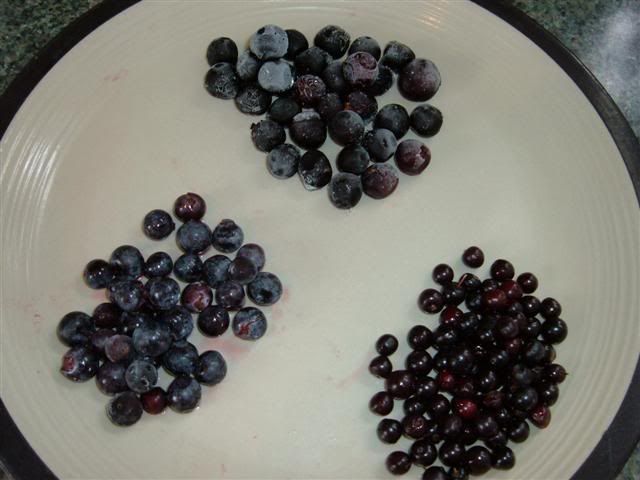NorthernWinos
Senior Member
- Joined
- Nov 7, 2005
- Messages
- 5,933
- Reaction score
- 8
WILD BLACK CHERRIES [Prunus Serotina]...are they Also Known As...CHOKE CHERRIES [Prunus Verginiana]????
Last fall we picked many berries that we call Choke Cherries off of small trees and bushes in our flower beds and yard....Then we found some later berries on bigger trees in the surrounding yard that looked the same tho maybe slightly bigger...we just blended them together, steamed juiced them and sealed the juice in Mason jars.
I have since made one batch of wine and have jars of juice to make one more batch....So...recently a friend gave us some frozen berries for the 'wine cause'...he called them Wild Black Cherries....
What do you call yours????[if you have any locally] Is the name a regional thing????
I Googled both names and the descriptions seems about the same, maybe except for the size of the bush/tree...there are two different botanical names, and some descriptions use both names...
Just curious as to local names in other areas...?
By The Way...the wine is one of our favorites and am hoping for another bumper crop this year.
Last fall we picked many berries that we call Choke Cherries off of small trees and bushes in our flower beds and yard....Then we found some later berries on bigger trees in the surrounding yard that looked the same tho maybe slightly bigger...we just blended them together, steamed juiced them and sealed the juice in Mason jars.
I have since made one batch of wine and have jars of juice to make one more batch....So...recently a friend gave us some frozen berries for the 'wine cause'...he called them Wild Black Cherries....
What do you call yours????[if you have any locally] Is the name a regional thing????
I Googled both names and the descriptions seems about the same, maybe except for the size of the bush/tree...there are two different botanical names, and some descriptions use both names...
Just curious as to local names in other areas...?
By The Way...the wine is one of our favorites and am hoping for another bumper crop this year.











